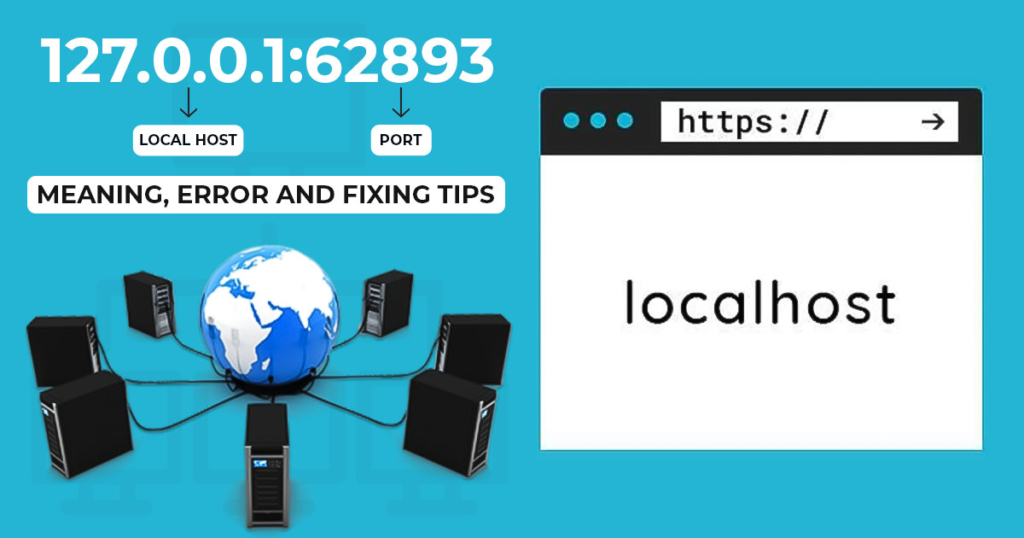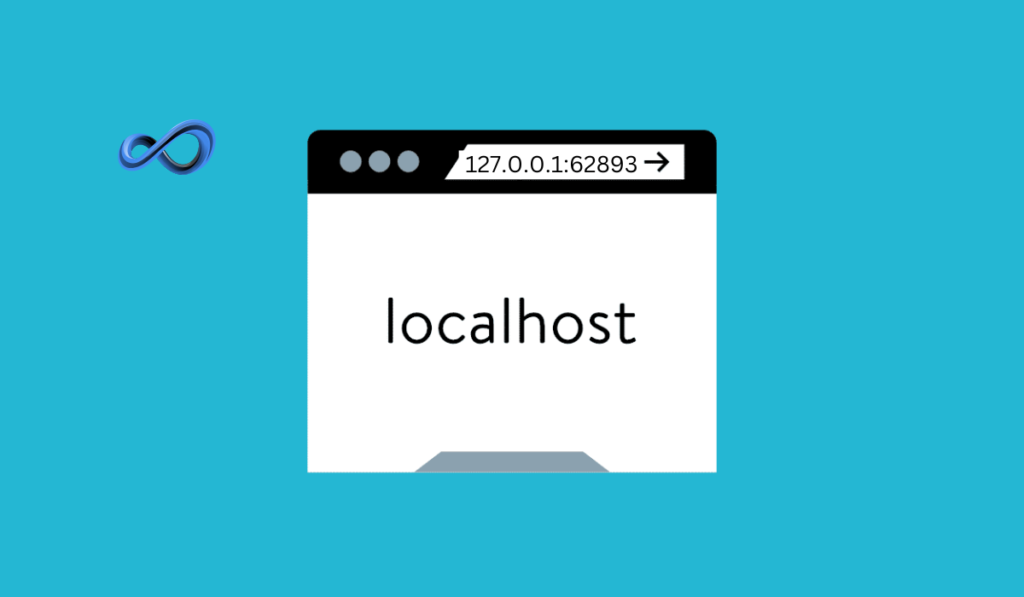Table of Contents
Have you ever stumbled upon cryptic addresses like 127.0.0.1:62893 and 127.0.0.1:49342 while troubleshooting software or browsing system logs? These seemingly random strings of numbers and colons hold significance in the realm of computer networking. This guide dives deep into understanding these addresses, their components, and what they tell us about internal communication on your device.
Understanding the Lingo: IP Addresses and Ports
Dissecting the addresses 127.0.0.1:62893 and 127.0.0.1:49342 requires familiarity with two key concepts: IP addresses and ports.
- IP Address: Imagine your computer as a house on a street. An IP address is like your house address on the internet. It’s a unique numerical label assigned to each device connected to a network, allowing them to identify and communicate with each other. Just like you wouldn’t be able to receive mail without an address, devices need IP addresses to send and receive data packets.
- Ports: Think of ports as doorways to your house. Different ports are designated for specific services or applications. For instance, emails typically use port 25, while web browsing utilizes port 80. When you access a website, your computer sends data requests through port 80 to the web server, which responds through the same port.
Decoding the Addresses: 127.0.0.1:62893 and the Loopback Interface
The first part of both addresses, 127.0.0.1, holds a special significance. It represents a loopback address, also known as localhost. It’s a self-referencing address that points back to your own computer. Think of it as a way for your device to talk to itself internally. Applications on your machine can use the loopback address to access resources or communicate with other applications running locally without going out to the external network.
What are 62893 and 49342? Port Numbers in Action
The numbers following the colon (“:”) in the addresses denote port numbers. These ports are crucial for differentiating between various applications or services running on the same device. Here’s where it gets interesting:
- Port 62893: This port is not as widely recognized as some common ports. However, it’s sometimes used by an application called Memcached. Memcached is a high-performance memory caching system that allows applications to temporarily store frequently accessed data in RAM (Random Access Memory) for faster retrieval. By caching data, Memcached can significantly improve the performance of web applications and databases.
- Port 49342: Identifying the specific service using port 49342 is trickier. Port numbers are assigned by a governing body (IANA – Internet Assigned Numbers Authority), but many ports above a certain range are not officially registered. This means port 49342 could be used by a lesser-known application, a custom service created by a developer, or even malware masquerading as a legitimate program.
Why Look for These Addresses?

You might encounter these addresses in various scenarios:
- System Logs: When applications or services write logs for troubleshooting purposes, they may record communication attempts using IP addresses and ports. If you see 127.0.0.1:62893 in logs, it indicates an application might be trying to interact with Memcached running on your machine.
- Software Configuration: Some software programs might require configuration options specifying the IP address and port for communication. If a program uses Memcached for caching, it might need the loopback address (127.0.0.1) and port 62893 to be specified in its settings.
- Troubleshooting Applications: If you’re debugging an application that relies on internal services, you might need to verify if it’s communicating correctly on the loopback address and designated port.
Security Implications of Loopback Addresses
While loopback addresses provide a secure way for applications to communicate internally, it’s essential to be cautious:
- Limited Access: The loopback address is not accessible from outside your device. Any external program trying to connect to an application on 127.0.0.1:62893 or similar loopback addresses will fail. This creates a layer of isolation, preventing unauthorized access from external sources.
- Vulnerability within the Loopback: Even though loopback offers isolation, it doesn’t guarantee complete security. Malicious software running on your machine could potentially exploit vulnerabilities in applications using the loopback interface to gain unauthorized access to sensitive data or even elevate its privileges to take control of your system. This is because the malware already has access to the internal workings of your device and can potentially leverage the trusted nature of loopback communication to bypass security measures designed for external threats.
Identifying Unknown Ports: Digging Deeper
As we saw with port 49342, encountering an unfamiliar port number can be puzzling. Here are some ways to investigate its origin:
- Process Monitoring Tools: Your operating system likely has built-in tools or downloadable utilities that display running processes and their associated network connections. These tools can reveal which program is using port 49342 (or any other unknown port).
- Online Resources: There are online databases that maintain a list of registered port numbers and the services they’re typically associated with. Searching for port 49342 in such databases might provide clues about its potential function. However, keep in mind that these databases may not have information on all port assignments, especially for custom applications or malware.
- Context Matters: The context in which you encountered the address can be a valuable hint. For instance, if you saw port 49342 in logs related to a music streaming service you recently installed, it might be a port used by that specific program.
Potential Risks and Cautions

While the loopback interface offers a secure communication channel within your device, there are still potential risks to consider:
- Misconfigured Software: Improperly configured software might accidentally expose a service running on the loopback address to the external network. This could create a vulnerability if the service is not designed for external access.
- Zero-Day Exploits: Even with loopback isolation, new vulnerabilities (zero-day exploits) might be discovered that allow attackers to gain access to internal systems. Keeping your software updated with the latest security patches is crucial to mitigate such risks.
- Social Engineering: Malicious actors might use social engineering tactics to trick you into running programs that exploit loopback vulnerabilities. Always be cautious when downloading and executing software from untrusted sources.
Best Practices for Secure Loopback Communication
Here are some practices to ensure secure communication using loopback addresses:
- Minimize Exposed Services: Only run essential services on the loopback interface. If a program doesn’t require loopback communication, avoid configuring it to use the loopback address.
- Keep Software Updated: Regularly update your operating system and applications to patch known vulnerabilities that could be exploited by attackers.
- Use Firewalls: Firewalls can act as an additional layer of security by filtering incoming and outgoing network traffic. Firewalls can be configured to block unauthorized access attempts, even if they target the loopback address.
- Practice Safe Downloading: Only download software from trusted sources. Be cautious of clicking on links or opening attachments from unknown senders, as they might contain malware that exploits loopback vulnerabilities.
Conclusion
Understanding addresses like 127.0.0.1:62893 and 127.0.0.1:49342 provides valuable insights into internal communication on your device. The loopback interface offers a secure environment for applications to interact, but it’s essential to be aware of potential security considerations. By following best practices and maintaining a vigilant approach, you can ensure that your loopback communication remains secure and protected.
This guide has equipped you with the knowledge to decipher these addresses, identify the services they might be associated with, and navigate potential security implications. Remember, a little awareness goes a long way in maintaining a healthy and secure computing environment.

